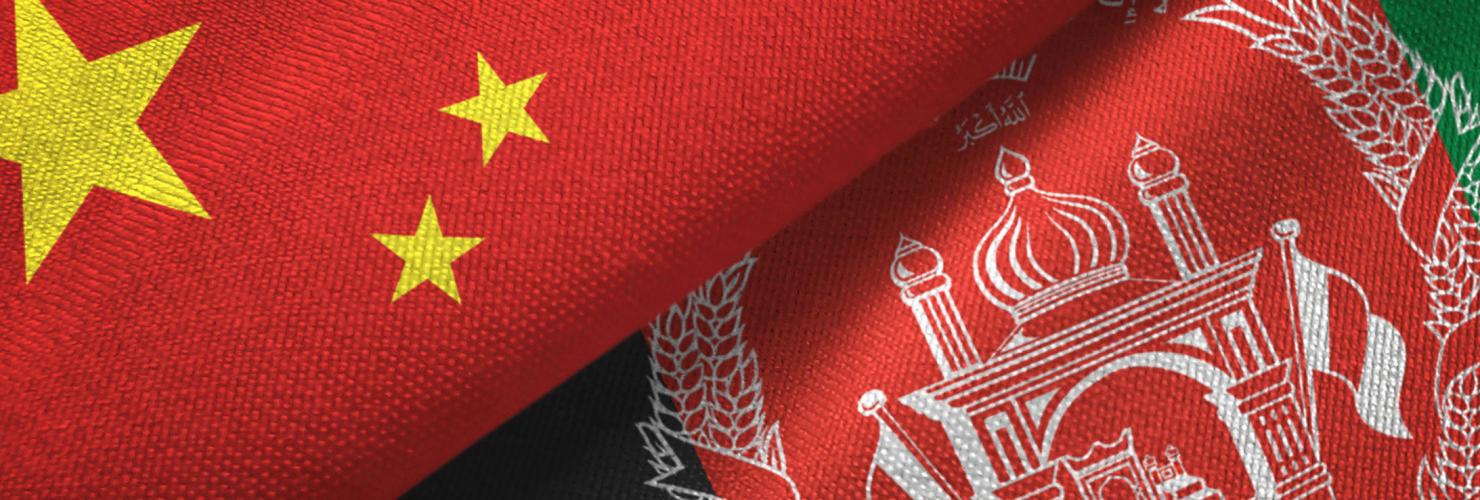

Toasting pine nuts – the China-Afghan air corridor turns one
Growing Chinese commitment to Afghanistan’s pine-nut industry is a small but illuminating example of Beijing’s interest in the region bordering Xinjiang, says Barbara Kelemen.
A burgeoning pine-nut trade between Afghanistan and China shines a light on Beijing’s growing interest in the region on its western border. Last year, the two countries boosted Afghanistan’s pine-nut industry when they opened an air-freight corridor, and this November, Chinese companies contracted to buy 2.2 billion dollars of Afghan pine nuts over the next five years. Given Afghanistan’s exports to China were 28 million dollars in 2018 and overall exports reached roughly 884 million dollars, China’s importance looks set to rise.
The air-corridor to Shanghai was hailed as a great improvement and expected to raise revenues from pine nut exports to 1 million dollars – and it seems to be living up to expectations. The Afghan government in October said the pine nut harvest would rise 10 percent to around 24,000 tons in 2019. With the dried fruit selling at around 36 dollars per kilo, farmers can expect additional revenues of around 800,000 dollars, mainly thanks to Chinese demand.
Before the opening of the air corridor, Afghanistan struggled with rampant smuggling – and some legal exports – to Pakistan. Across the border the pine nuts were packaged and re-exported, often to China. As Afghanistan still lacks facilities and certification needed for processing pine nuts, the refining stages have merely shifted from Pakistan to China. The profits from value added processes now go to China – and Afghan traders still export only raw product.
China-Afghan economic cooperation still faces challenges
So there is light and dark when it comes to this instance of economic cooperation – it clearly still faces challenges. Yousef Dawran, a local pine-nut trader and entrepreneur, worries that “air corridors are too expensive and mainly a short-term solution” and calls the project “mainly a great PR story”. According to Yousef, real economic change requires longer term and more sustainable solutions. Perhaps Afghanistan needs to focus more on pine-nut processing capacity.
Yousef’s disappointment is fed by the feeling that the cooperation has not delivered “as much as expected” – that China could and should be doing more. Alice Wells, the US Acting Assistant Secretary for South and Central Asia, has on a number of occasions criticized China for its lack of economic assistance to Afghanistan. She has described Beijing’s Belt and Road Initiative (BRI) in Afghanistan as a “slogan” rather than reality, pointing to stalled projects such as the Kabul-Jalalabad Road.
China sees economic cooperation as a way to stabilize Afghanistan
China’s government has sharply rejected such complaints, in turn pointing to projects like the 2016 cargo train between Nantong and Hairatan, the 2018 air corridor and a number of infrastructure projects as proof of its genuine commitment. Yao Jing, the Chinese Ambassador to Pakistan, has said that the main challenge for larger Chinese projects – such as the Mes Aynak copper mine – remains Afghanistan’s ongoing lack of domestic security and stability.
But that is also exactly why China has to continue with economic cooperation projects, however small or fraught. Beijing sees economic cooperation as a way to stabilize a country that is in turn vital for stability of China’s western provinces, especially Xinjiang. Beijing worries that the East Turkestan Islamic Movement (ETIM) or its successor organization, the Turkestan Islamic Party (TIP), consider Afghanistan a conduit into China to radicalize Uighurs in Xinjiang.
Afghanistan’s regional significance for China’s security is one reason for China’s greater military presence on its western periphery. The People’s Armed Police force has for some time operated from bases in Tajikistan only 10 miles from the Afghan border. There have also been reports of Chinese activities in Afghanistan’s Wakhan corridor in Badakhshan province. And Chinese officials have maintained a pragmatic relationship with the Taliban since the late 90s.
Beijing has emerged as a new facilitator of talks between Afghan conflict parties
Given all this, Beijing has emerged as a new facilitator of talks between the Afghan government and the Taliban. Without the historical legacy of Russia or the US, with economic clout in Kabul and considerable influence in Islamabad, it could become a more trusted go-between for Afghanistan’s long warring factions than other parties. Pakistan’s support has been crucial to the Taliban and has complicated Islamabad’s bilateral relations with the United States.
A clear sign of China’s increasing influence is its push to start an Afghan peace process. A meeting between the Taliban and the Afghan government is now set to take place in Beijing. Although it is hard to say how much of it is the Taliban showing the US that it has alternatives, China is now seen as one of the potential brokers and facilitators of the intra-Afghan dialogue. It has relations with Kabul, contacts with the Taliban, and potentially holds sway over Pakistan.
US President Donald Trump has pledged to reduce the US military presence in Afghanistan and about half of the US soldiers in the country are expected to start going home soon. As complete US-withdrawal from Afghanistan has become possible, the question is whether China would step up to fill the void as a stabilizing power. Its commitment to the Afghan pine-nut industry suggests that there are ways for China to do so although its intentions in that regard remain unclear. For all his criticism, pine-nut trader Yousef firmly believes economics and stability come hand in hand.
About the author:
Barbara Kelemen was an intern in the Foreign Policy program at MERICS from October until December 2019. She holds a Double MSc in International Affairs from the London School of Economics and Peking University. She previously worked with Slovakia's MFA, STRATPOL and the International Institute for Strategic Studies (IISS, London).
The views expressed in this article are those of the author and not necessarily reflect those of the Mercator Institute for China Studies.